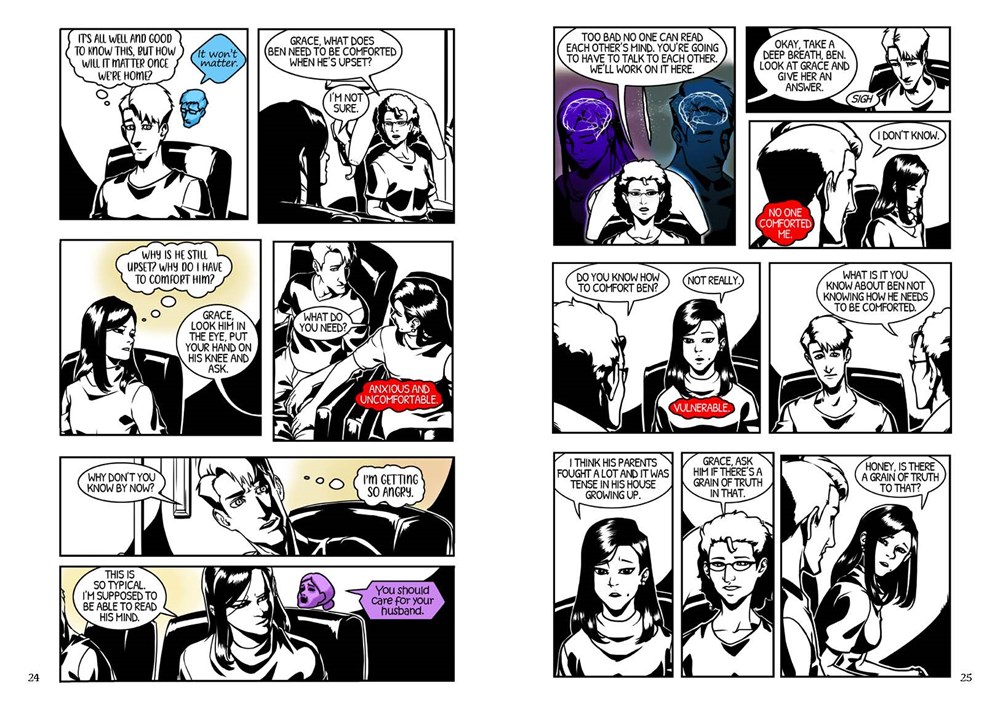Apr 28th 2024
Interview: Dive into I Do, I Don't: How to Build a Better Marriage
I Do I Don't: How to Build a Better Marriage tells the story of Ben and Grace on their journey of learning and practicing the tools and skills needed for a lifetime of intimacy. Each chapter introduces a new relationship skill, and ends with Put It Into Practice, a set of easy-to-follow exercises to help the reader develop a personal understanding of the skills needed to build and strengthen any relationship.
With a foreword by John Kilcullen, founder/CEO of the For Dummies brand and book series, and written by acclaimed psychotherapist Chandrama Anderson MA, LMFT, and engagingly illustrated by rising young artist Nur Jaffar Latip, I Do I Don't will help any reader to Build a Better Marriage.
Chandrama Anderson earned her M.A. in Counseling Psychology, Holistic Studies from John F. Kennedy University in 2005. Chandrama continually advances her training - in couples counseling from the world renowned couples experts and trainers such as Dr. Stan Tatkin, Dr. John Gottman, Dr. Julie Gottman, Dr. Sue Johnson - as well as ongoing reading and study particularly in the areas of attachment, brain development, communication, and the science of psychotherapy. Chandrama is a California Licensed Marriage and Family Therapist in private practice. She lives in Bend, Oregon with her husband and their dog.
Read on to hear about her experience in creating I DO, I DON’T: HOW TO BUILD A BETTER MARRIAGE from Soaring Penguin Press.

DIAMOND: For those who aren’t familiar, can you tell us what readers can expect from this book?
CHANDRAMA ANDERSON: I Do I Don’t is the first in a series of an engaging story along with concrete tools to build better relationships—written by a Licensed Marriage and Family Therapist. Readers go to couple’s therapy with Ben and Grace, learn what they learn, do the same homework, and use the free I Do I Don’t companion workbook. Readers will see Ben and Grace’s words, thoughts, parental voices whispering in their ears, plus their unconscious feelings. It becomes clear how all of these interact and drive their emotions and behaviors—for better or worse.
How did this project come about?
I have specialized in couples counseling since 2007. I woke up one morning during Covid certain it was time to write a couple’s book. Coming from a dysfunctional family myself, I realized that by offering tools for healthier adult relationships, maybe fewer children would be abandoned. When I see couples, it's 1:2. With the I Do I Don't series, I can reach an unlimited number of people and get beyond the stigmas and cost issues of therapy.
Why did you become a therapist?
I was working in high tech for 15 years. Over a 5-year period, several family members, including my baby daughter, died. I'd had six miscarriages, and by some miracle, I had my son. I realized I needed to do Work of the Heart. Initially I focused on grief counseling, and then a mentor for couples therapy appeared in my life.
What led you to choose the graphic novel format for your book?
I looked on Amazon and there were more than 70,000 couple’s books! I had to figure out how to differentiate my book. Despite the fact that I had not read any graphic novels or comics growing up, the idea came to me to offer a different—visual—way to learn. Most people won’t read 300 pages of text, especially when they’re distressed. As it turns out, I love graphic medicine and its ability to show and not tell. And everyone from CEOs to carpenters completely get it!
What kind of obstacles did you face while putting this title together?
I didn’t know that graphic medicine existed, and even now, four years after the initial idea, there isn’t anything like I Do I Don’t on the market. It doesn’t fit in a box. As I’m preparing panel proposals for San Diego Comic Con, it’s clear that there’s no checkbox for I Do I Don’t there either! So, I’ll submit them under ‘comics’ and ‘educational’. Another obstacle was that I was told ‘No’ 105 times before John Anderson of Soaring Penguin Press said ‘Yes’ to I Do I Don’t. He completely understood that publishing it is a public service; that we all can use some help with communication and connection—no matter what relationship.

What would you say is the most rewarding part of the process?
It’s really difficult to choose the most rewarding part: the collaboration that I have with my young artist in the Philippines is phenomenal; the fact that I get to help people all over the world who would never go to therapy whether by choice or circumstance; the mentors who have helped and guided me, including the . . . For Dummies founder/CEO, John Killcullen (who wrote the foreword); or the sheer joy that I have discovered creating graphic medicine books.
In terms of audience, who is this book for?
Since the tools help with communication and connection with your partner, kids, family, friends and coworkers, it’s for everyone over age 16 or so.
What are you hoping readers take away from this book?
I want readers to know that they hold the power in their own hands, minds and hearts to do the work, practice every day, behave differently, intentionally and kindly—and due to neuroplasticity, rewire their brain for better communication and connection in all of their relationships.
Another takeaway is to know and understand that most people have a system and their partner has a system—and they don't mess with—or talk about—their systems. I Do I Don’t is literally an illustrated shared system in which both parties know all of the rules of that system.
Libraries could offer I Do I Don’t reader discussion groups. The purpose would be to read and understand the concepts and tools in each chapter, in a non-therapeutic setting—and then go home to implement them.

